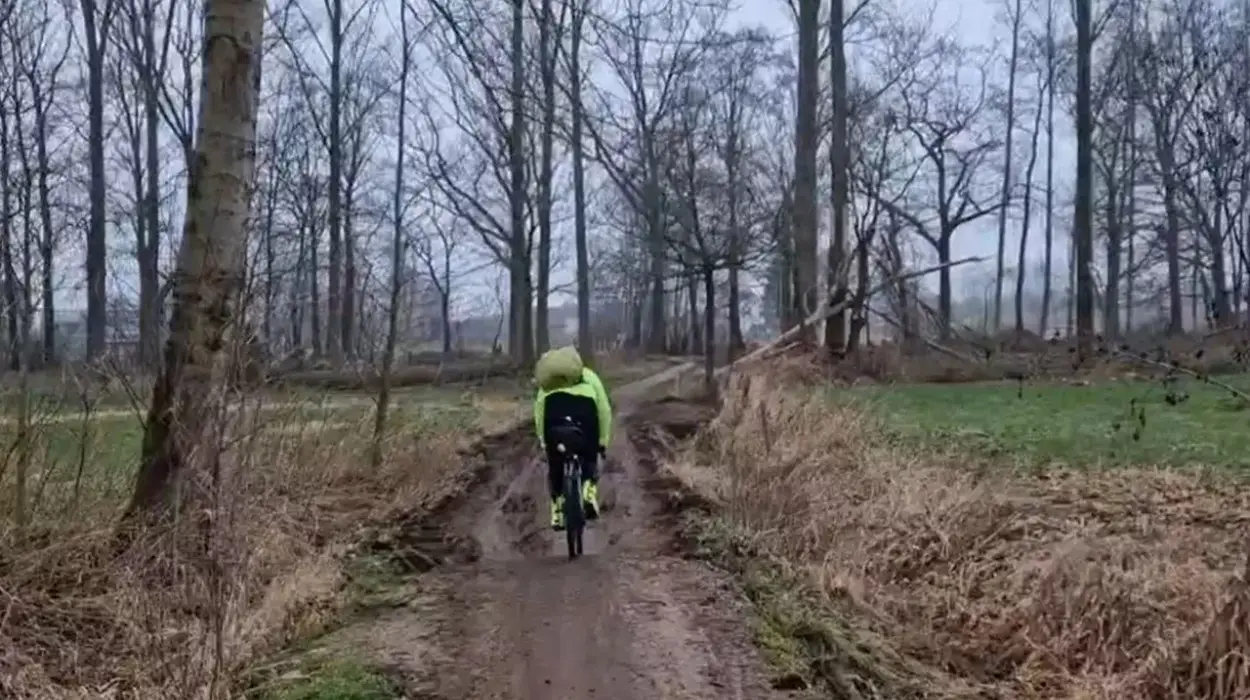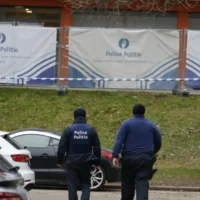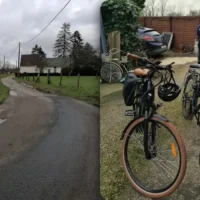Bilzen (Brussels Morning Newspaper) – The Netherlands constructed its first cycle superhighway with 4.5 miles stretching between Breda and Etten-Leur for cycling prioritisation at junctions. The route was constructed in 2004 at a total cost of €3.5 million and now provides cyclists with red asphalt surfaces and shelters in addition to an observation platform.
Cyclists face major difficulties in navigating the F70 cycle highway diversion through Bilzen because of its substandard state of maintenance. Complete closure of the F70 cycle highway at Nieuwmolenweg continues until June 2026 because of construction activities while the detour lacks proper markers, leading to dangerous terrain like mud and holes on unpaved ground.
Several issues exist in the diversion route leading to the F70 cycle highway near Bilzen that became necessary due to Nieuwmolenweg’s construction. Cyclists experience troubles due to unclear navigational markers, which become significantly problematic for unfamiliar riders in the area. Standard bicycles experience dangerous riding conditions because of the numerous potholes and deep mud on the unpaved portions of the diversion.
Kobe Vierbergen participates in a multi-day bicycle journey from Maastricht to Hasselt while currently residing in Beveren since he lacks familiarity with the area.
The local promotional campaign presents Limburg as a cycling haven, although it offers distinct pleasures in this region.
“It is a search. It was not indicated everywhere, so I ended up here by chance,”
he testifies.
He confirmed that he was on the right track. And Kobe was on his way with a gravel bike. That comes in handy in the passage ahead of him.
“I see a serious pothole and then a path with mud tracks. Not nice if you have to go through here with a normal bike.“
Another passer-by is on his way to work.
“It’s been so muddy here for a while now. And I was planning to go to the gym with these shoes after work, but they’re covered in dirt now, so we’re not going to do that.”
He stated that as he knew the area, the lack of a few signposts wasn’t a problem for him.
“But what bothers me is that there’s really no good cycling option between Bilzen and Diepenbeek. The Steenweg with the murder lane is shorter but dangerous, and here, you have to make extra kilometres in the mud.”
The cyclists’ union is familiar with the problem.
“We very often receive complaints about diversions for cyclists,”
Says spokesperson Wies Callens.
“That is because site managers usually do not think from the logic and the cyclist’s point of view. Very often, you do not see the correct signs on the site, or cyclists are diverted via roads that are not really good either. And if there is a diversion for a long period, then someone must also take responsibility for maintaining that diversion and keeping an eye on whether everything is still indicated and in order.”
In this specific case, there is another problem, according to Callens.
“Cycle highways are often paths along railways or towpaths. If there are works there, there is not always an easy diversion possible. As a result, you sometimes get longer diversions, or diversions like here where small, slow roads are used, and they are not always in good condition. But we do ask that governments and site managers pay more attention to the quality of the diversions and also look at them from the perspective of the cyclist.”
Infrabel will review the situation on-site, says spokesman Frederic Petit.
“We will quickly send an inspection team to map out missing signage,”
Says Petit.
“As soon as that has happened, the site manager can also place new arrows.”
He also agrees that the diversion is very long,
“But there is currently no good alternative possible. Although we will review in later phases of the works whether we can make any adjustments.”
Will cyclists embrace the F70 diversion in Bilzen?
The F70 cycle highway serves as the main cycling route in Bilzen, yet it requires testing for a potential construction diversion route. The cycling community opposes the proposed detour route even though they acknowledge the necessity of infrastructure development. Multiple issues regarding the length of the safety profile and appropriateness for bike users, including commuters, recreational riders, and families, exist regarding the diversion route.
Users who experienced previous detour routes in this cyclic region of the area have developed cautious attitudes toward such alterations. Some detour signs were positioned inadequately, thus extending travel distances and directing cyclists toward roads with decreased safety because of heavy traffic flow.




